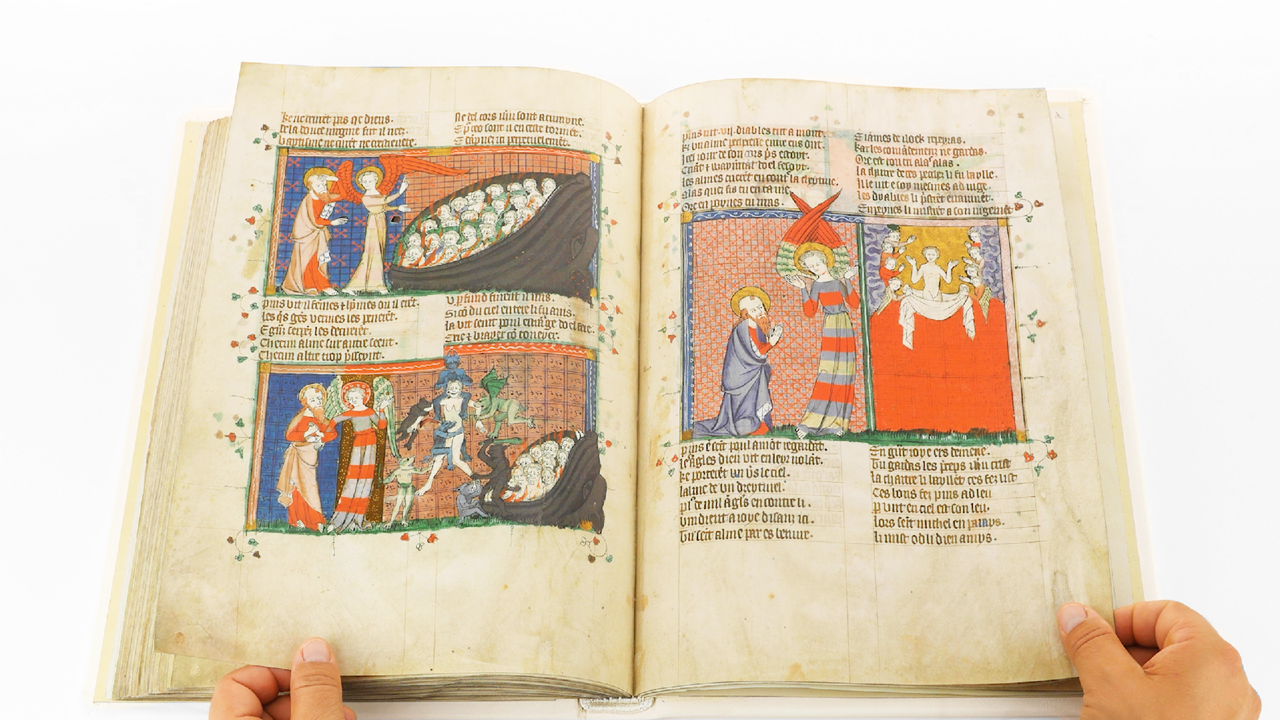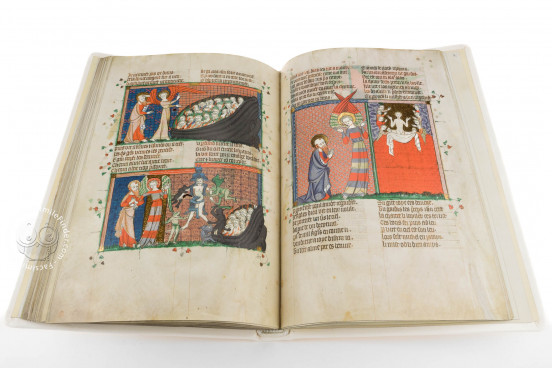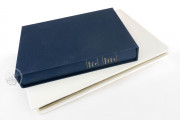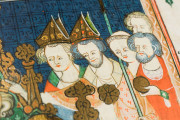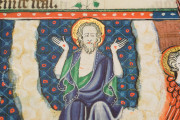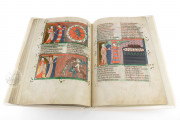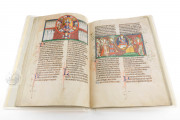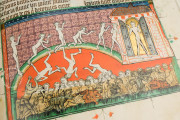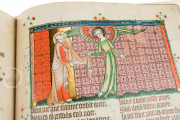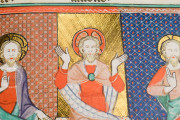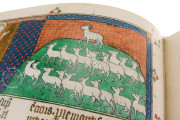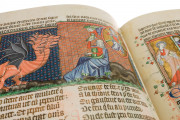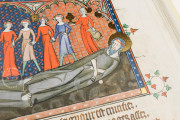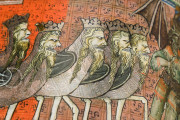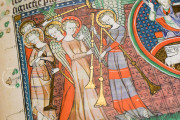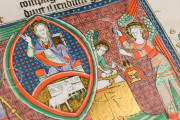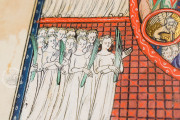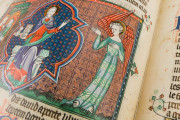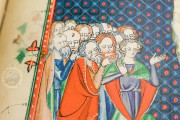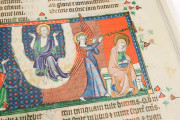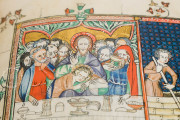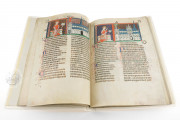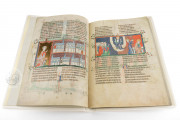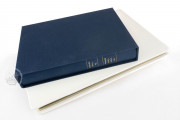Produced in London, the dazzling Corpus Apocalypse is one of the most copiously illustrated fourteenth-century English Apocalypses. The slim volume of just seventy-two leaves is densely packed with 121 narrative illustrations, all of exquisite draughtsmanship and richly elaborated with tooled gold and silver. Of the many splendid examples in the genre of the illuminated Apocalypse, this one is unique for its inclusion of an English Coronation Order. This might reflect the coronation of Edward III in 1327, but the manuscript is dated on stylistic grounds to the 1330s or 1340s.
The patron was a Lord of Cobham, who, as a lord, had a role to play in the coronation ceremony, an honor that is richly commemorated in this personalized Apocalypse. The deluxe manuscript includes the Christian biblical book of the Apocalypse in Latin with an Anglo-Norman French metrical version and prose commentary; the Vision of Saint Paul in Anglo-Norman French verse and Latin prose; and finally, the English Coronation Order in Anglo-Norman French.
Vibrant Visual Storytelling
The copiously illuminated volume includes 106 miniatures illustrating the Apocalypse, fourteen illustrating the Vision of Saint Paul, and one nearly full-page miniature for the Coronation Order. The refined figural style, characterized by elongated and expressively gesturing figures, gently flowing drapery, and delicate facial types, is quintessential English Gothic. The palette of orange, pale blue, violet, and pale beige is intensified by the shimmer of tooled gold and silver on every page, imbuing the scenes with a vibrantly expressive energy well suited to the content of the texts.
Two painters, whose work can be identified in the Neville of Hornby Hours (London, British Library, MS Egerton 2781), illuminated the manuscript. One also contributed to the Smithfield Decretals (London, British Library, MS Royal 10.E. iv) and the Taymouth Hours (London, British Library, MS Yates Thompson 13).
A Single-Handed Effort
The text of the Corpus Apocalypse is written in two columns in a large, slightly sloping Gothic Textualis Quadrata by the same scribe throughout. Since the entire book was executed in a single campaign, the idiosyncratic compilation of the three texts must have been planned, and commissioned as such, from the outset.
Noble Patronage
In the historiated initial at the beginning of this magnificent book, the patron is represented kneeling wearing the arms of Cobham, a leading family in southeastern England that held high positions at the English court (fol. 1r). Traditionally identified as Henry de Cobham (d. 1339), it is more likely that the patron was his son John.
Soon after production, the codex passed to Juliana de Leybourne (1303-1367), Countess of Huntington, who bequeathed it to Saint Augustine's abbey in Canterbury. The monastery was dissolved in 1538; many of its manuscripts were acquired by Matthew Parker (1504-1575), master of Corpus Christi College and archbishop of Canterbury, who left his enormous collection to his former college.
We have 1 facsimile edition of the manuscript "Corpus Apocalypse": Die Corpus-Christi-Apokalypse facsimile edition, published by Quaternio Verlag Luzern, 2012
Request Info / Price
